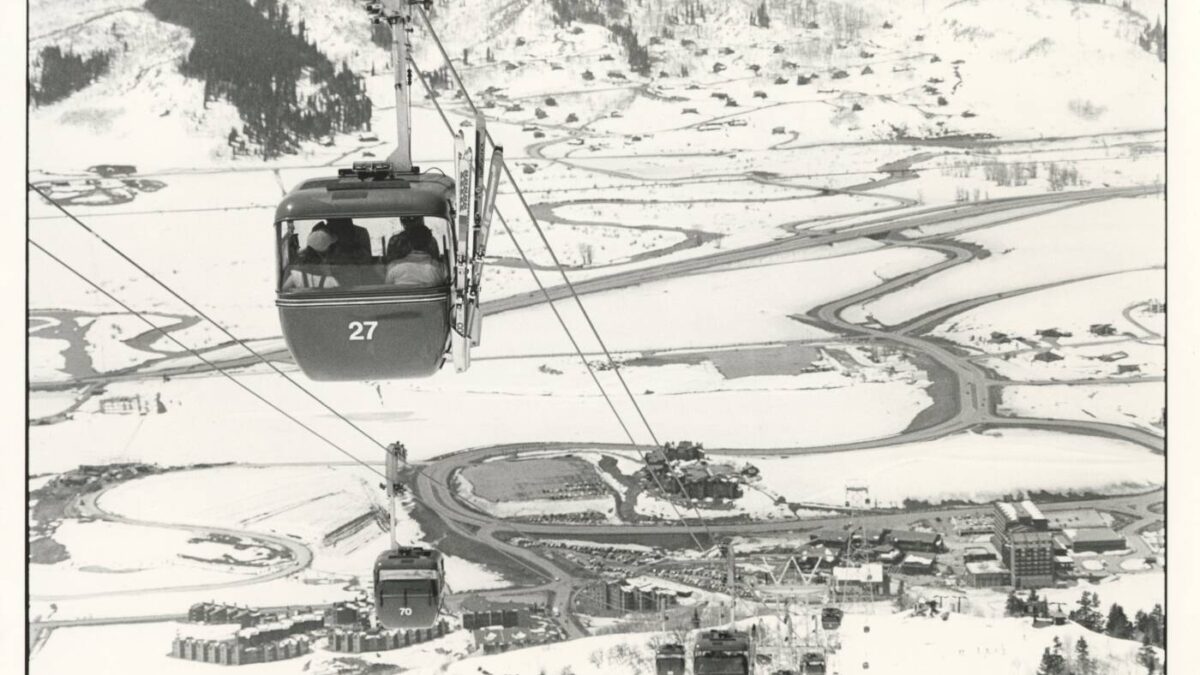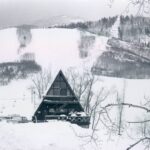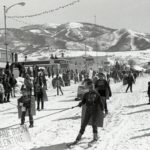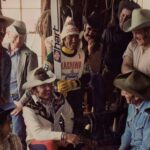Steamboat By The Decades: The ’70s
Written by Eugene Buchanan
It was a cold day in October 1971 when Steamboat’s Director of Skiing Billy Kidd pulled into town with his Porsche 911 Speedster, Triumph 500 motorcycle, and “townie” Volvo station wagon, took off his cowboy hat, unhitched his horse and stayed. He had just graduated from CU in Boulder and was thinking of going to business school but decided to give winning a gold medal one more shot. That he did. The first U.S. male to win an Olympic skiing medal in 1964, Kidd, clad in an Easy Rider-style stars and stripes helmet, went on to win the gold in Combined at the 1970 World Championships and again at the inaugural U.S. Pro Tour. The first contract his coach, Bob Beattie, landed him was in Steamboat, where Kidd became the resort’s first-ever Director of Skiing—a position he’s now held for more than 50 years.
“Back then as an athlete, if you had medals in your pocket you could make money for a couple of years,” says Kidd, originally from Stowe, Vt. “For me it’s only lasted five decades — now I might have to go out and get a real job.”
Kidd picked a good time to hitch his horse to the Steamboat wagon. Like Kidd slaloming down the mountain, things were moving along at Steamboat Ski Area as well. Just a year before, in 1970, the resort added the Stagecoach gondola to its fleet, a six-passenger, three-tower lift built by Bell that whisked skiers to the top of Thunderhead, reaching a height of 252 feet with a record 3,330-foot span. It also added the Summit Poma lift, opening-up the face of Storm Peak.
“Those were the years we became a real ski area,” says Jim “Moose” Barrows, a local Olympian who has lived here since the ‘50s. “It was very exciting. I mean, who ever thought we’d have a gondola here? That was when we really became of age.” (Barrows won a World Cup downhill in 1967 and competed at the 1968 Olympics in Grenoble, suffering a spectacular crash newscasters dubbed “the thrill of victory and agony of defeat.”)
The improvements were only beginning. In 1972, the resort added thePriest Creek chair, the country’s first lift to be planted by helicopter, and opened the Priest Creek area for world-class glade skiing, including Closets, Shadows and Twilight, and cutting the High Noon, One O’Clock, Two O’Clock and Three O’Clock runs. It also installed the Elkhead and Christie II chairlifts.
For Kidd it was a match made in heaven. “I’d heard about Steamboat from Buddy Werner and Moose, who were on the U.S. Ski Team with me,” he says. “I got hooked on powder and sunshine, and with the town’s ranching background and a name like Billy Kidd, it was a perfect fit.”
Kidd, who loved Steamboat’s western heritage, quickly did what he could to help foster that image. In 1974, he and six-time All-Around World Champion cowboy Larry Mahan invited some cowboys up from the Denver Stock Show for a day of racing and the Cowboy Downhill was born, which is now approaching its 50th anniversary of high-flying, chaps-wearing fun—where the competitors used to lasso a ski hostess at the race’s finish. “The western image here is real, not manufactured by Madison Avenue,” Kidd says.
The resort went out of its way to help other people learn how to ski also, with Michael Barry and Sven Wjik helping bring the Special Olympics to Steamboat in 1977, attended by the likes of Ethel Kennedy, Eunice Kennedy Shriver and Olympian Bruce Jenner. While a drought forced the resort to close early that year and reopen March 5, when it did it was with yet another milestone improvement to its terrain: the official opening of Chute One, now a badge of courage for advanced skiers and riders.
Finally, at the end of the decade — after bell bottoms and disco had hopefully run their course and the world had gotten over the break-up of the Beatles — the ski area was purchased from LTV by Northwest Colorado Ski Corp. in 1979, changing its name to Steamboat Ski Corp. The transfer and ushered in a slew of even more improvements—including the private sale of the Village Inn Hotel and Golf Course at the resort’s base to Sheraton, heralding a new era of hospitality.
But the resort’s original western friendliness remained unchanged, just as it does today — even though Kidd now sports a helmet instead of his trusty Stetson. “The sport’s essence is still the same, even after all these years,” says Kidd, who’s glad he’s been able to hang his trademark hat here for so long. “You slide down the hill with a big grin on your face and can’t wait to go up and do it again.”





